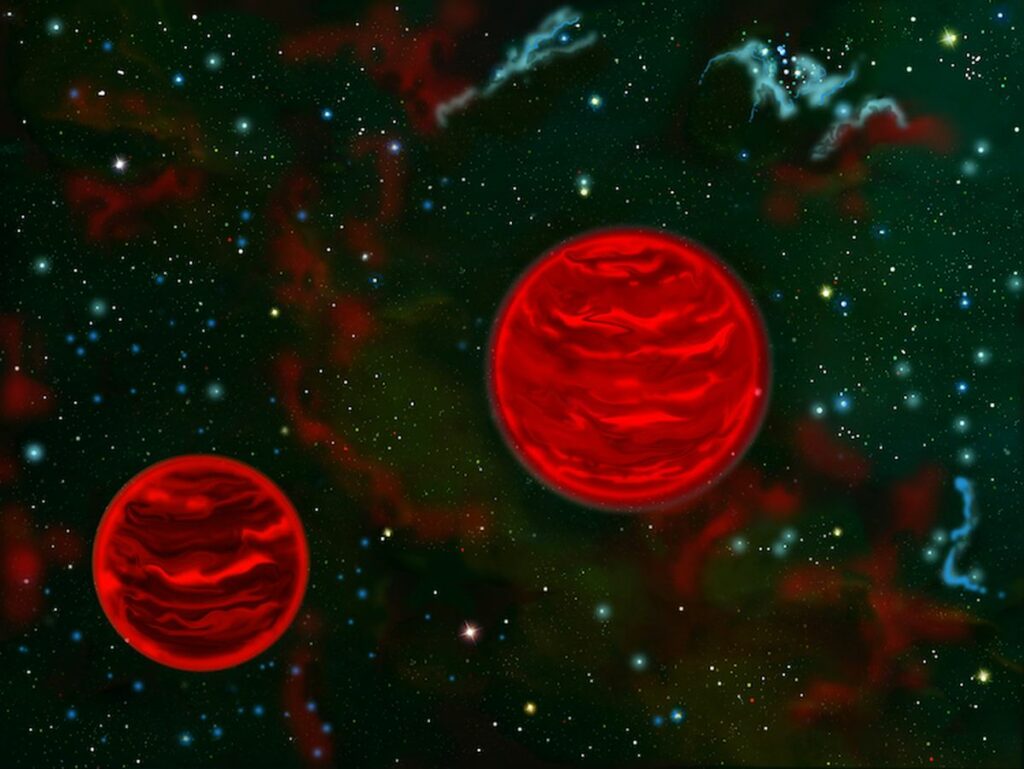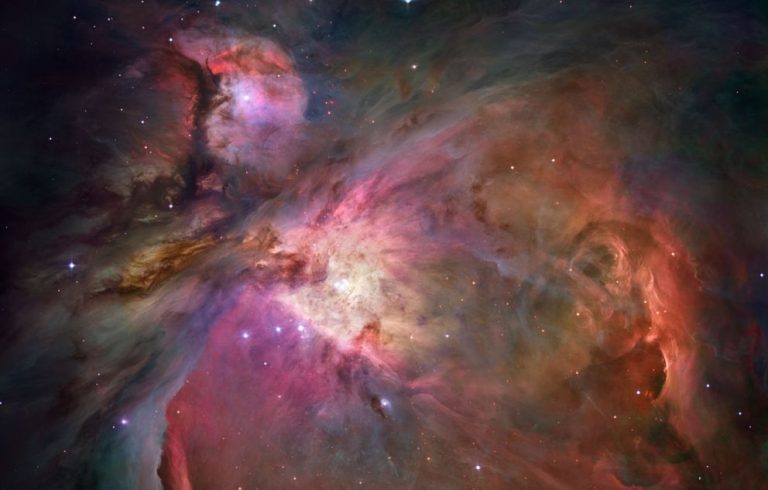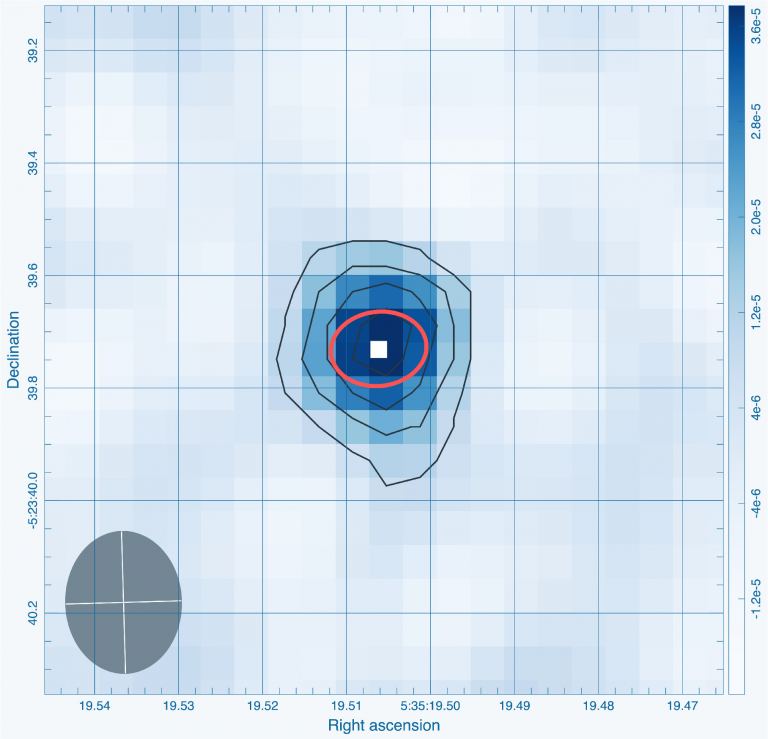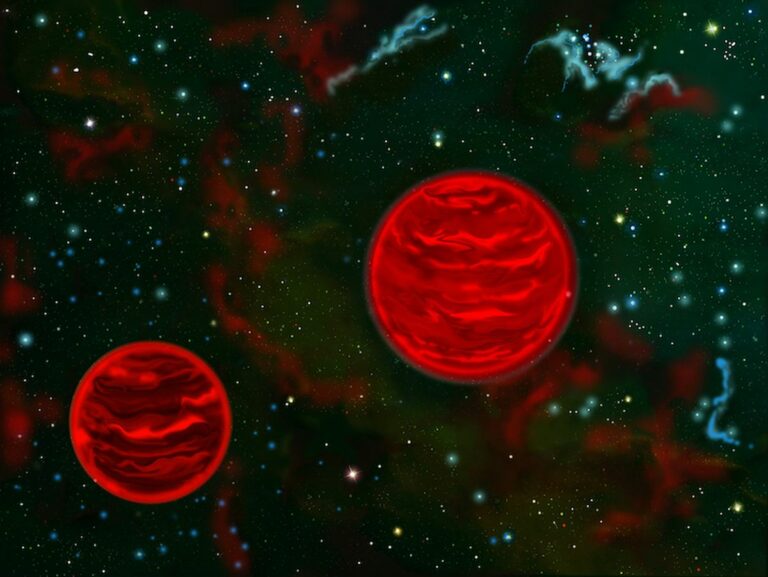Confirmation of Free-Floating Binary Planets in the Orion Nebula by Radio Telescope
It is widely accepted that planets revolve around stars, a fundamental principle in astronomy. However, this notion was challenged when astronomers began discovering rogue planets, also known as free-floating planets (FFPs). These planets have broken free from the gravitational pull of their parent stars and now wander through space without being tethered to any star. Some of these FFPs have even formed independently.
Recently, astronomers have made an intriguing revelation that certain FFPs can actually orbit each other in binary relationships, akin to swapping their star for another rogue planet.

In the year 2023, astronomers, in collaboration with the James Webb Space Telescope (JWST), made a remarkable discovery. They detected 42 Jupiter-Mass Binary Objects (JuMBOs) within the inner Orion Nebula and the Trapezium Cluster. JuMBOs differ from other free-floating planets due to their massive size, comparable to that of Jupiter.
The existence of these wide free-floating planetary-mass binaries came as a surprise, as it contradicted our current understanding of star and planet formation.
This groundbreaking research, titled “A Radio Counterpart to a Jupiter-mass Binary Object in Orion” by Rodriquez et al. in 2024, involved the JWST conducting a near-infrared survey of the region using its powerful NIRCam. The telescope observed powerful outflows and jets emanating from young stars, ionized circumstellar disks, and various other objects in the vicinity. Among the significant findings were the 42 JuMBOs. The authors of the paper mentioned that future studies would delve into these discoveries and explore them in greater detail.

That is precisely what has occurred. Recent research published in The Astrophysical Journal Letters delves deeper into one of the JuMBOs. However, instead of using infrared observations, the authors utilized observations from the Karl G. Jansky Very Large Array (VLA) to study the objects through radio emissions.
The paper, titled “A Radio Counterpart to a Jupiter-mass Binary Object in Orion,” is authored by Luis Rodriguez, a researcher at the Instituto de Radioastronomía y Astrofísica, Universidad Nacional Autónoma de México.
In their paper, Rodriguez and his colleagues state, “The existence of these wide free-floating planetary-mass binaries was unexpected in our current theories of star and planet formation. These systems are not associated with stars, and their components have masses similar to giant Jupiter-like planets and separations in the plane of the sky of approximately 100 au.”
Our understanding of planet formation begins with stars. Stars form within massive molecular clouds, and during this process, a rotating disk of gas and dust forms around the star. Planets then form within these disks and take up orbit around the star.
However, rogue planets, also known as Isolated Planetary Mass Objects (IPMOs), can form differently. Currently, there are two competing explanations for their formation. They may form around stars as described earlier, or they may form independently, similar to low-mass stars and brown dwarfs.
The JuMBOs range in mass from 0.6 to 14 times that of Jupiter, and their separations range from 28 to 384 AU. The formation of these binary objects remains unexplained. Solitary rogue planets align with our understanding of star and planetary system formation. However, JuMBOs do not fit within this framework.
The objects mentioned share similarities with brown dwarfs, which are sub-stellar objects that are larger than the largest planets but too small to undergo fusion. Brown dwarfs can be found in binary pairs with wide separations. Astronomers have discovered a pair of brown dwarfs separated by 240 AU, and it is likely that there are more widely separated brown dwarf binaries yet to be found.
In this study, the researchers focused on a specific object called JuMBO 24, which was previously studied. They analyzed VLA observations spanning a ten-year period and found that JuMBO 24 had a much higher radio luminosity compared to brown dwarfs.
Naturally, the research team questioned whether the radio sources they detected were originating from JuMBO 24. After thoroughly examining the data, they concluded that it is highly improbable for the radio emissions to come from any other source than JuMBO 24. According to the researchers, the chances of the radio emissions and the infrared emissions detected by JWST originating from separate sources are only 1 in 10,000.

The ultracool dwarfs are the objects that are most similar to JuMBOs in terms of their radio emissions. However, JuMBO 24 does not exhibit the same patterns in radio emissions as the ultracool dwarfs do. The authors of the study point out that the radio emission from JuMBO 24 appears to be steady at a level of about 50 millijanskys over periods of days and years, while the emissions from ultracool dwarfs show greater variability. This makes JuMBO 24 the first detected centimetre continuum source with a planetary-mass binary object.
The researchers conclude that the radio emission is marginally resolved in the same direction as the infrared source detected by JWST, suggesting that the radio emission comes from a combination of the two planetary-mass objects. However, the mechanism responsible for the radio emissions remains a mystery. The team states that additional radio observations are necessary to determine the nature of the radio emission mechanism.
Lead author Rodriguez believes that this discovery holds more significance than just the unexplained radio emissions. He emphasizes that these binary planets on ultra-wide orbits around each other could potentially host moons that could support life. He points out that these objects could have moons similar to Europa or Enceladus, both of which have underground oceans of liquid water that could potentially support life.
Do not forget to share your opinion with us to provide you with the best posts !




0 Comments